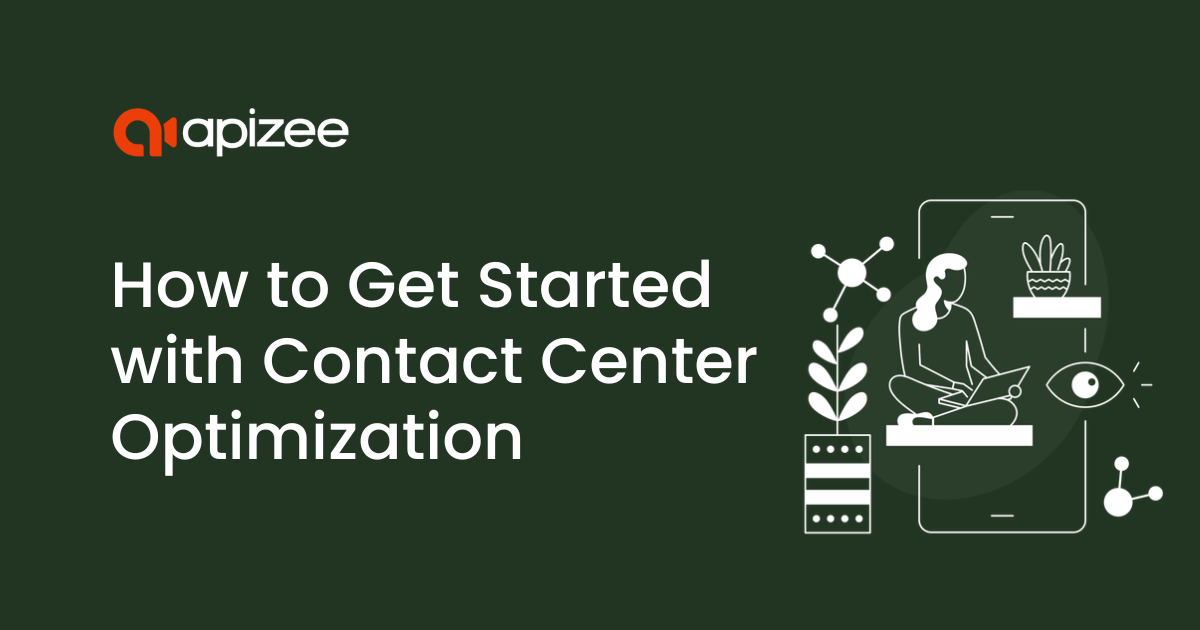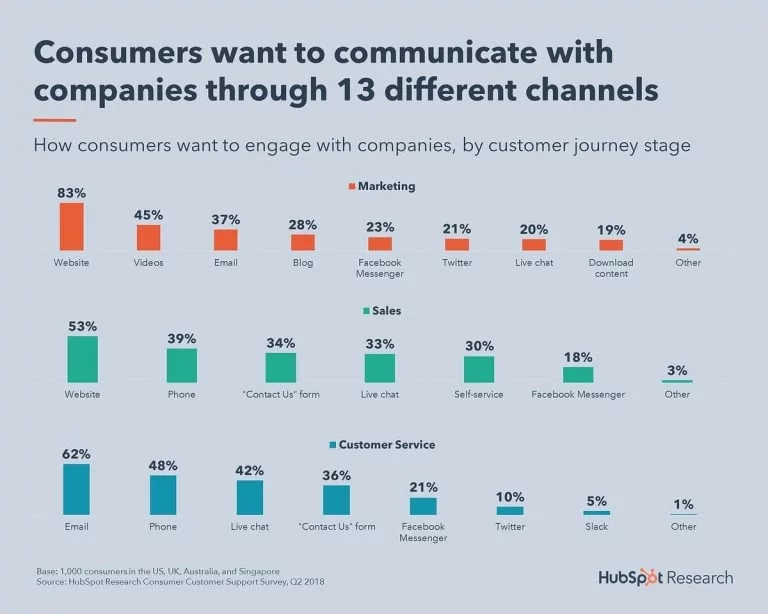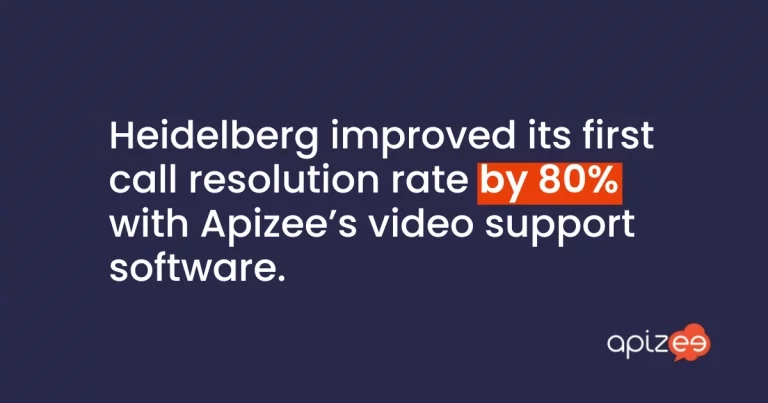How to Optimize Your Contact Center to Improve Customer Satisfaction



Contact center support is no longer just a troubleshooting department. It’s your opportunity to provide a seamless customer experience and stay competitive in a volatile market.
Your contact center support needs to be top-notch with measurable KPIs or you’ll struggle to delight customers, stay ahead of the curve, and boost retention.
Throughout this article, we’ll explore why video communication should be a major part of your overall customer service communication. You’ll also learn how to get started with call center optimization.
Contact center optimization involves assessing your current customer service landscape and ensuring your customer support is operating efficiently.
Continual improvement is essential for growing businesses. With customer experience (CX) being such a focus, and digital customer experience (DX) becoming a necessity, the old ways of call centers are history.
For example, as you analyze your existing customer service metrics, you might discover issues like long wait times or multiple transfers. Hangups like this have often been the norm for traditional call centers, but they can frustrate customers, leaving them less than satisfied with your business.
Once you start the contact center optimization process, you can implement tools that will allow you to see the entire customer contact history in one place, or enlist video support to fix solutions on site.
These types of updates help your customer support team create a personalized, empathetic experience, improving customer satisfaction and retention.
The act of “optimization” in and of itself is ensuring a process or task is as effective as possible. So even if you aren’t seeing major customer complaints, optimizing your contact center and customer service options can still help iron out any underlying kinks.
But that’s not the only reason to optimize your contact center every so often.
Contact center optimization can help you improve CX for both new and existing customers. 88% of customers say their experience with a company is just as important as the company’s products and services, so you need to make sure yours stands out.
Ensuring your customer service team is efficient at handling requests and helping those in need will make them feel more secure in working with your business. It will also help maintain customer service targets and goals.
48% of customers switched brands at some point in 2021 to find better customer service. By optimizing your call center performance and other customer support channels, you’re able to retain more customers and improve your revenue.
When your contact center works properly, your agents will feel less overwhelmed, and the number of support requests received will be more manageable. A better team provides better results, so make sure you’re giving them the proper support.
Using the most up-to-date tools can make things easier internally, helping to lower operational costs by automating tasks and increasing support speed.
For example, customer service software can help automatically route calls to the right agent by using artificial intelligence (AI) to gather information from each caller.
Optimizing your contact center helps improve performance and provide a better experience for your customers. Follow these six steps to begin assessing your own customer support channels.
Start by taking note of all existing contact center and customer support processes. You’ll want to ask yourself questions like:
Establishing goals will help guide your overall optimization process. Do you want more reviews on Trustpilot, or are you hoping to improve customer retention? Maybe you want to reduce call volume by offering support on digital channels.
Or, if you’ve noticed that sentiment around your customer service has gone down, your main goal might be to focus on generating a more positive association.
To get started, you need to pay attention to key performance indicators (KPIs) surrounding your contact center performance. There are specific top metrics to track.
Gather each of these metrics so you can discover where there’s room for improvement. For example, you might have agents marked as unavailable too often, or your agents might not be trained well enough to have a high first call resolution rate.
The next step is workforce optimization. As you look through your contact center performance, you should be able to gauge whether your people are part of the problem.
Some of the most glaring issues include agents missing targets, low NPS/CSAT scores, and high auxiliary time. But you should also consider wellbeing as a metric.
87% of contact center employees report high stress or very high stress at work. Make sure your staff isn’t burned out and that you’re properly training and supporting them thoroughly.
A big part of workforce management is ensuring your staff are happy and engaged. As of the first half of 2021, only 20% of global employees say they’re engaged at work.
Working on improving employee engagement is important. Companies with engaged employees report a 10% increase in customer engagement and a 23% increase in profitability.
Here are a few things you can do to help engage employees and make sure they’re properly trained in helping callers with their issues:
Make sure your team isn’t getting overworked and burned out. Enable them to fulfill customer expectations and resolve issues or complaints.
Are you making the best use of your agents’ time? Tools can help.
What tools are in your current tech stack, and are they being used? Are there any under-used features that would be useful? Locate where can you help customers help themselves and improve self-service.
A few tools for any successful call center or customer service stack include:
You also want to take a look at the full list of features that each tool offers. For example, interactive voice recording (IVR) can help direct calls without needing a live agent, or there’s speech analytics for analyzing data from customer calls.
How many ways can your customers contact you? Is it their preferred way?
Offering omnichannel customer support ensures that your customers can reach you from any avenue — whether it’s a call, social media message, live chat request, or video call.
In fact, there are several different avenues that customers say they want to be able to use to reach companies, depending on where they are in the customer journey:

Source: Hubspot
Although nearly half of consumers say they want to reach out via phone call, HubSpot also shared that two-thirds of them get frustrated by continuously having to repeat themselves to support representatives until they can finally get help.
Offering support over a number of different channels, especially video, limits frustruation because it allows customers to contact your company via a channel they feel comfortable with.
Incorporating video assistance in your customer support communication can cut way down on support time.

In fact, the printing equipment company Heidelberg cut down resolution time by 50% and improved its first call resolution rate by 80% from enlisting the help of Apizee’s video support software.
Heidelberg’s customer service team receives an average of 300–400 calls each month, often about equipment issues. By adding video chat to their customer support options, agents are able to remotely diagnose problems, allowing them to help clients more efficiently than ever.
Make sure you have a diverse selection of communication channels to assist customers as effectively as possible.
Pinpoint all the issues you need to streamline to improve your contact center. Then, order them by priority to attack each line item strategically. Start with what needs fixing now versus what you can address later.
For example, if you’ve located issues with your customer success team, that might be your first overhaul. After all, the company can’t run without employees.
Utilizing tools to prevent burnout can help team members feel better about their work, which reduces overwhelm.
Consider setting up a scoring system for any issues you’ve uncovered. You could rank them on a severity scale and determine your priorities according to overall business goals and team objectives.
From there, implement your changes thoughtfully. A technological transformation may be intimidating for team members used to working with certain software. Ensure any set up for complicated software includes robust training before deployment to avoid your metrics tracking the wrong way.
Or, opt for simpler solutions, drip-fed over a longer period of time. Determine how you plan to roll out your changes, what should come first, and how you’ll get your people involved.
Optimization isn’t a one-and-done approach. Instead, put a plan in place so you can regularly assess performance and ensure your customers are always getting top-notch support.
Take a look at your metrics every quarter (or other predefined time period). Doing so can help you locate dips in performance and quickly address them before they become major issues.
After you’ve analyzed KPIs, go back through each of the steps we’ve covered here, but under a slightly different lens:
Create a modern contact center that meets customers where they are and provides the best possible support.
Start evaluating your contact center baseline and pinpoint your goals before moving on to each optimization step.
Finally, make sure you’ve got the right tools in your customer service arsenal. Apizee can be an essential means of support for providing high-quality customer service. Learn more about how we can help.
Explore key findings from the Genesys State of Customer Experience report. Learn how AI, omnichannel strategies, and video chat are transforming CX and enhancing customer satisf...
The State of Customer Experience report by Genesys : Key Insights and Trends
27 Mar 2025
Despite AI and automation, customers still prefer to speak to a human for support. Discover why human interaction remains essential for great customer service.
Why Customers Still Want to Speak to a Human in Customer Service
17 Mar 2025
Discover the top customer experience influencers in Europe, shaping the future of CX and customer service.
Top 100 Customer Experience Influencers to follow
10 Mar 2025
Interested in our solutions?